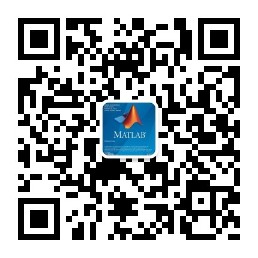博文
[转载]【无人机】【2018.05】基于无人机的无线通信与联网:基础、部署和优化
|| |
本文为美国弗吉尼亚理工学院暨州立大学(作者:Mohammad Mozaffari)的博士论文,共259页。
使用无人机(UAV)等空中平台已成为提供可靠和经济高效的无线通信的一个有希望的解决方案。特别是,无人机可以快速有效地部署,以支持蜂窝网络的运行,并通过建立视线通信链路来提高其服务质量(QoS)。无人机具有机动性、灵活性和自适应高度等固有特性,在无线系统中有着非常重要的潜在应用。值得注意的是,尽管基于无人机的通信具有这些固有的优势,但很少有人分析将无人机用作空中无线平台时的性能权衡与折中。
本文的主要目标是为无人机无线网络的部署、性能分析和优化奠定分析基础。本文对无人机通信的各个领域做出了一些基本贡献,包括:
1)无人机的高效部署;
2)性能评估和优化;
3)新型飞行、三维(3D)无线系统的设计。
在部署方面,利用优化理论中的工具,开发了无人机基站在上下行场景中的三维优化布局的整体框架。结果表明,所提出的部署方法显著提高了地面用户的下行链路覆盖率,使物联网(IoT)应用中的上行链路通信具有超可靠和节能的特点。
在性能优化方面,提出了一种基于无人机的无线系统在无人机飞行时间约束下的数据服务性能优化框架。为此,利用最优传输理论的数学框架,分析推导了在有限的无人机悬停时间内,使地面用户获得最大数据服务的最优小区关联。研究结果为无人机无线网络中悬停时间和服务质量之间的权衡提供了依据。
在性能评估方面,本文对无人机通信系统与地面网络共存时的性能进行了综合分析。特别地,提出了一个简单的分析框架,用于分析具有无人机基站和设备到设备(D2D)用户的网络覆盖率和速率性能。研究结果揭示了这种无人机D2D网络中的基本折衷,从而允许采用适当的系统设计参数。
然后,本文对三种新型无人机无线系统的设计进行了研究。首先,提出了一种在无线网络中有效使用高速缓存无人机的新框架。结果表明,利用无人机的机动性和以用户为中心的信息,用户的体验质量是如何显著提高的。其次,提出了一种新的部署和操作基于无人机的天线阵列系统框架,该系统在最短时间内向地面用户提供无线服务。结果表明,该无人机天线阵列系统在服务质量、频谱和能量效率方面都有显著提高。最后,为了有效地结合从空中用户到基站的各种无人机用例,引入了成熟的3D蜂窝网络的新概念。对于这种新型的三维无线网络,开发了一个用于部署、网络规划和性能优化的统一框架,从而在网络中产生最大的覆盖率和最小的延迟。总之,本文的分析基础和框架为无人机无线通信系统的有效设计和运行提供了重要的指导。
The use of aerial platforms such asunmanned aerial vehicles (UAVs), popularly known as drones, has emerged as apromising solution for providing reliable and cost-effective wirelesscommunications. In particular, UAVs can be quickly and efficiently deployed tosupport cellular networks and enhance their quality-of-service (QoS) byestablishing line-of-sight communication links. With their inherent attributessuch as mobility, flexibility, and adaptive altitude, UAVs admit several keypotential applications in wireless systems. Remarkably, despite these inherentadvantages of UAVbased communications, little work has analyzed the performancetradeoffs associated with using UAVs as aerial wireless platforms. The key goalof this dissertation is to develop the analytical foundations for deployment,performance analysis, and optimization of UAV-enabled wireless networks. Thisdissertation makes a number of fundamental contributions to various areas ofUAV communications that include: 1) Efficient deployment of UAVs, 2)Performance evaluation and optimization, and 3) Design of new flying,three-dimensional (3D) wireless systems. For deployment, using tools fromoptimization theory, holistic frameworks are developed for the optimal 3Dplacement of UAV base stations in uplink and downlink scenarios. The results showthat the proposed deployment approaches significantly improve the downlinkcoverage for ground users, and enable ultra-reliable and energy-efficientuplink communications in Internet of Things (IoT) applications. For performanceoptimization, a novel framework is developed for maximizing the performance ofa UAV-based wireless system, in terms of data service, under UAVs’ flight timeconstraints. To this end, using the mathematical framework of optimal transporttheory, the optimal cell associations, that lead to a maximum data service toground users within the limited UAVs’ hover duration, are analytically derived.The results shed light on the tradeoff between hover time andquality-of-service in UAV-based wireless networks. For performance evaluation,this dissertation provides a comprehensive analysis on the performance of aUAV-based communication system in coexistence with a terrestrial network. Inparticular, a tractable analytical framework is proposed for analyzing thecoverage and rate performance of a network with a UAV base station anddeviceto-device (D2D) users. The results reveal the fundamental tradeoffs insuch a UAV-D2D network that allow adopting appropriate system designparameters. Then, this dissertation sheds light on the design of three newdrone-enabled wireless systems. First, a novel framework for effective use ofcache-enabled UAVs in wireless networks is developed. The results demonstratehow the users’ quality of experience substantially improves by exploiting UAVs’mobility and user-centric information. Second, a new framework is proposed fordeploying and operating a drone-based antenna array system that deliverswireless service to ground users within a minimum time. The results showsignificant enhancement in QoS, spectral and energy efficiency while leveringthe proposed drone antenna array system. Finally, to effectively incorporatevarious use cases of drones ranging from aerial users to base stations, the newconcept of a fully-fledged 3D cellular network is introduced. For this new typeof 3D wireless network, a unified framework for deployment, network planning,and performance optimization is developed that yields a maximum coverage andminimum latency in the network. In a nutshell, the analytical foundations andframeworks presented in this dissertation provide key guidelines for effectivedesign and operation of UAV-based wireless communication systems.
1. 研究动机、项目背景与本文贡献
2. 有效部署多架无人飞行器实现最佳无线覆盖
3. 应用于节能物联网通信的移动无人机
4. 无人机无线网络中的悬停时间优化
5. 地面设备对设备网络无人机基本性能分析
6. 无线网络中支持缓存的无人机
7. 无线无人机天线阵的通信与控制
8. 无人机蜂窝网络中小区关联的最优传输理论
9. 无人机B5G:3D无线蜂窝网络的基础
10. 系留气球接力高空平台无人机的和速率分析
11. 结论与开放问题
更多精彩文章请关注公众号:
https://blog.sciencenet.cn/blog-69686-1240590.html
上一篇:[转载]【信息技术】【2017】5G技术的研发
下一篇:[转载]【计算机科学】【2019.10】【含源码】基于中轴变换的点云可见性分析